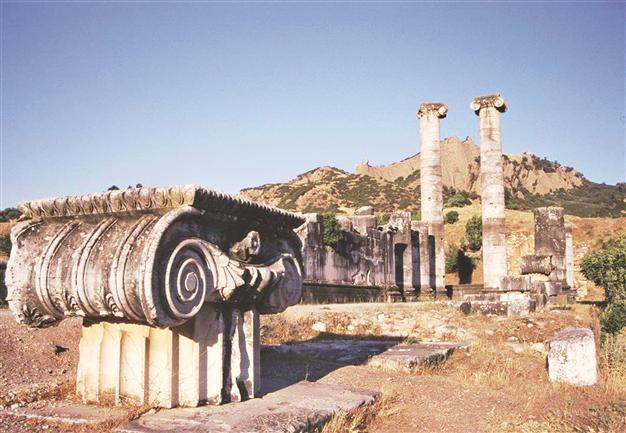Excavations restart on ancient wonder
İZMİR - Anadolu Agency
 Excavations are set to restart on İzmir’s Temple of Artemis, one of the most important monumental structures of the ancient age and widely considered one of the seven wonders of the world.
Excavations are set to restart on İzmir’s Temple of Artemis, one of the most important monumental structures of the ancient age and widely considered one of the seven wonders of the world. The head of the excavations in the ancient city of Ephesus, Professor Sabine Ladstatter, said the excavations would focus on four areas in the ancient city and that works would start on the temple, as well as a Turkish bath and the Çukuriçi tumulus, a settlement area at the southern part of the Virgin Mary Church.
The most recent excavations were made at the Temple of Artemis 20 years ago, said the professor.
“It will be a very important and exciting excavation for us. We hope that we will find data that will be able to confirm our hypotheses. We will seek answer to questions like was there a church in the area of the Temple of Artemis?” said Ladstaetter, adding that making excavations was not easy in the temple area because of the high water table.

The head of the excavations in the ancient city of Ephesus,
Professor Sabine Ladstatter says their goal is to reach the
remains of the Roman era in the temple. AA Photo
“This year we are lucky because the ground water withdrew. We normally do it with pumps. Now we will progress faster. We are planning to work until the rainy season. Our goal is to reach the remains of the Roman era in the temple,” said the Austrian professor.
Ladstatter said Ephesus was one of the best-known excavation areas in the world, adding that the Temple of Artemis had failed to draw many visitors.
“An arrangement for visitors could be made in collaboration with the Ephesus Museum Directorate. There are not too many visible remains of the temple in the area. This is why information boards and visuals could be erected for visitors,” Ladstaetter said.
Size of a football field
The former head of archaeology at the Ephesus Museum, Cengiz İçten, said the temple excavations had been sought for a long time and that significant artifacts had been unearthed during the excavations.
He said the temple was completed in 550 B.C. and was a huge and very impressive structure that was constructed completely from marble.
“It is an 18-meter-high temple built on huge columns on an area the size of a football field. This structure was one of the magnificent structures in this era. But through time, this temple lost its [grandeur]. It is believed that the columns of the temple were used in the construction of other structures.”
İçten said the temple was discovered by İzmir-Aydın railway engineer Turtle Wood in 1860 but that many of its unique artifacts were subsequently smuggled out of the Ottoman Empire.
“Some of these pieces are on display at the British Museum,” he added.
















